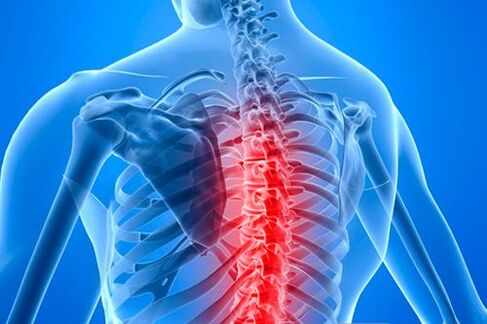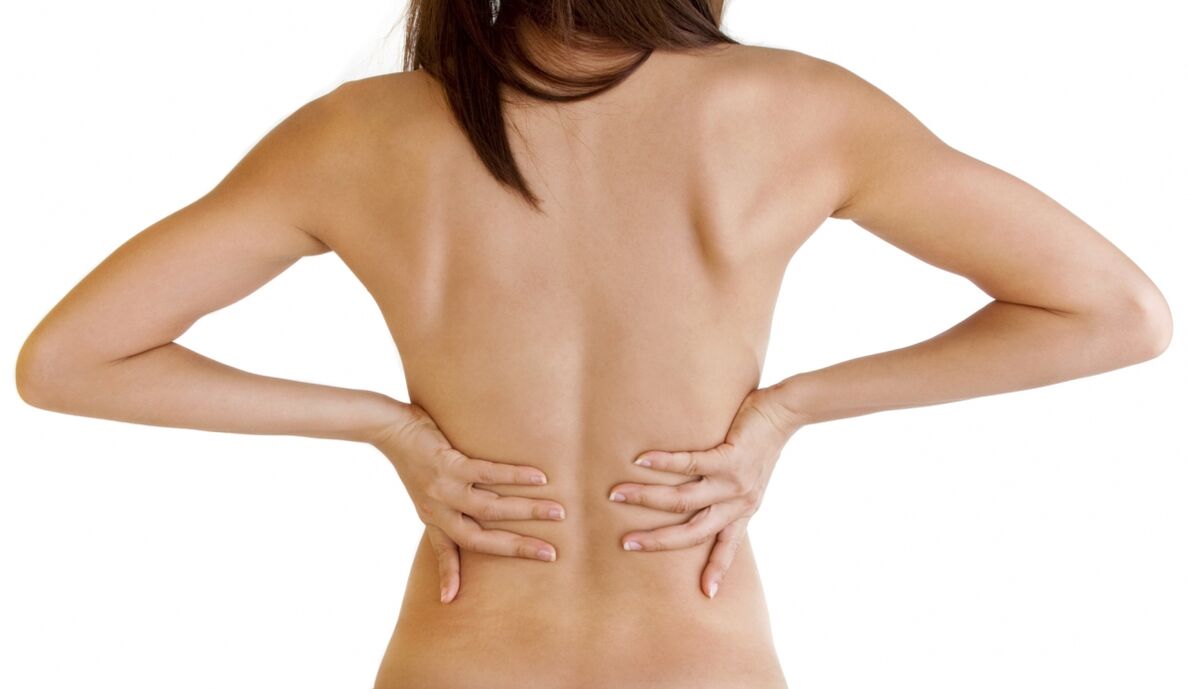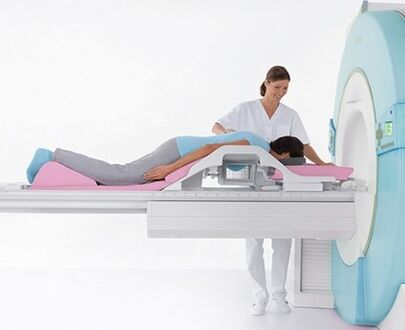Osteochondrosis– a set of dystrophic disorders of the articular cartilage. Usually, this disease affects men and women over 30 years of age. But nowadays it can even be found in teenagers.
Depending on the location of joint damage, there are cervical, thoracic and lumbar injuries. In most cases, osteochondrosis manifests itself in the form of severe backache, headache and dizziness.Osteochondrosis of the thoracic regionIt occurs less often than cervical, but is no less dangerous due to various complications.

Thoracic osteochondrosis: what is it?
In the case of thoracic osteochondrosis, pathological changes of the spine occur in the thoracic region. Most often, the intervertebral discs are affected. The chest region is not as mobile as the neck region, so the characteristic symptoms of the disease are not immediately noticeable. The diagnosis is made at a later stage of the disease.
Dystrophic disorders affect the cartilage and connective tissue of the muscle, which causes complications and leads to other serious diseases.
Patients are used to easy treatment of osteochondrosis, but without timely treatment, thoracic osteochondrosis can be dangerous to health. The disease often affects the cervical and thoracic spine, which affects the quality of life.
What are the grades?
The treatment of the disease begins with establishing a diagnosis and determining its stage.
- In the first stagepeople usually do not notice any changes, there is no pain, but the intervertebral discs begin to lose their elasticity, characteristic protrusions appear when the disc protrudes into the spinal canal without tearing the annulus fibrosus.
- In the second stage– the disease progresses, pain, dizziness and other neurological symptoms appear. The intervertebral discs are even less flexible, and there is a risk that the fibrous ring will bulge into the spinal canal when it ruptures - a hernia will form.
- In the third stagethe pain causes a lot of discomfort and is aggravated by the appearance of a hernia.
- Osteochondrosis of the thoracic spine infourth stagecharacterized by progressive neurological symptoms, the intervertebral discs completely lose their firmness and flexibility. The vertebrae begin to die.

Osteochondrosis cannot be determined by external signs, although it is often associated with another pathology of the spine - scoliosis, which can be noticed during a visual examination.
What could be the reasons
The cause of disorders occurring in the spine is insufficient nutrition of the cartilages and vertebrae. It is impossible to say exactly why such an error occurs in the functioning of the organization.However, several factors contribute to this:
- A sedentary lifestyle and, as a result, weak back muscles.
- Bad posture, uncomfortable posture.
- Various back injuries, improper weight lifting (pulling from the floor), heavy physical activity.
- Other diseases of the spine.
- Inadequate nutrition, lack of essential vitamins and minerals in the diet, especially calcium, which are necessary for the formation of healthy bone tissue.
- Pregnancy. Women often notice signs of osteochondrosis of the thoracic region during pregnancy, when the load on the spine increases, in addition, due to additional resource costs, the body often lacks vitamins and minerals.
- Heredity. If your relatives suffer from this disease, the likelihood of developing it increases. In this case, you should worry about prevention.

When making a diagnosis, doctors often identify a combination of several factors: sedentary work, frequent improper weight lifting and poor posture.
Symptoms of osteochondrosis of the chest region
In the early stages, the disease does not manifest itself in any way. Neurological disorders (dizziness, spots in the eyes, etc. ) often appear even before the pronounced pain syndrome, which the patient does not associate with back problems. People start to suspect spinal problems when they experience pain. Consider the main signs of thoracic osteochondrosis:
- Sharp, pressing pain in the upper chest region, which worsens after exercise, hard work or discomfort. It can be accompanied by shortness of breath, coughing and breathing problems.
- Cold feeling in the hands and feetwithout reason, numbness of the limbs.
- Headache, dizziness, fog in the eyes, blurred vision, feeling tired, shortness of breath. When the intervertebral discs are displaced, nerve endings and blood vessels are compressed, which is why neurological symptoms appear.
Due to thoracic osteochondrosis, patients feel pain in the area of the heart or stomach, which greatly complicates the diagnosis of the disease.
These are the main signs that indicate intervertebral osteochondrosis. Some patients experience pain in the gastrointestinal tract and heart, which often leads to an incorrect diagnosis. The nature of the pain also varies. For example, some patients experience long-lasting, non-acute pain,dorsalgiaor vice versa, severe pain that stiffens the muscles and makes breathing difficult -dorsago.
These sensations are felt in the stomach area, the patient misinterprets them, and liver, pancreas, etc. sent for examination, not suspecting that the cause of the pain is osteochondrosis of the chest region. With a combination of several forms of chondrosis - cervical and thoracic - people complain of a feeling of a foreign body in the throat, which becomes more pronounced after physical exertion or an uncomfortable position.

Complications
- During the development of the disease, accompanying diseases are added to the main disease. Thus, long-term compression of the blood vessels leads to the area of the spinal columnfor cardiovascular failures, which in particularly severe cases can interfere with the functioning of the heart.
- Another common complication, especially when combining thoracic and cervical forms of osteochondrosis,vegetative-vascular dystonia. The compression of the blood vessels and nerve endings disrupts the proper nutrition of the brain, as a result of which patients experience long-lasting severe headaches, dizziness, a feeling of fog in the eyes, and blurred vision. In advanced cases, fainting may occur due to back disease.
- It is possible from the nervous systempanic attacks, which occur during excessive mental or physical stress or severe fatigue. At these moments, patients notice a rapid heartbeat and breathing problems: it is difficult to breathe, there is not enough air.
- Another complication that causes difficulties not only for patients, but also for doctorsintercostal neuralgia.Pinching of the nerve roots in the thoracic spine causes a specific pain syndrome, reminiscent of the sensations associated with heart disease. Patients come to the doctor with heart complaints, which complicates the diagnosis. This disease accompanies various pathologies of the spine, but the symptoms usually disappear when treatment is started.
If you do not pay attention to the development of osteochondrosis of the breast, after a while it significantly affects the quality of life, limits activity and range of motion.

Diagnostics
Doctors are prevented from making a correct diagnosis by the variety of symptoms, which often lead to the suspicion of gastrointestinal or nervous system disorders. In order to avoid mistakes, orthopedists or neurologists send an X-ray of the thoracic spine and often perform an MRI or CT scan to clarify the diagnosis.
To rule out heart disease, the patient receives an EKG. Treatment is prescribed only after diagnosis.
Treatment of osteochondrosis of the thoracic region
Unfortunately, this disease cannot be cured. When pain occurs, the changes in the spine cannot be corrected. However, modern medicine can relieve pain and thus improve the quality of life. Correctly selected therapy and a healthy lifestyle can avoid aggravation.
Treatment involves many factors that work together. Medicines and physical therapy are usually used to relieve symptoms and prevent the condition from worsening. Surgical intervention is only necessary in the event of a herniated disc. There are dozens of home treatments, but all should be discussed with your doctor to avoid making things worse.
Drug treatment

Medicines for the treatment of osteochondrosis are used to relieve pain, and anti-inflammatory pain relievers are often used for this purpose. In later stages or in case of severe exacerbation, the patient receives an anesthetic block. To relieve neurological symptoms, take drugs to improve cerebral circulation.
Physiotherapy
Effective, non-pharmacological methods to relieve pain and tension in the back muscles: magnet therapy, laser therapy, acupunctureetc. After a few full-fledged procedures, the positive result will be noticeable. Use only after consultation with a doctor!
Massage
The most popular and cheapest home method. Massage relieves muscle tension, which relieves pain. You can get the best results from professionals, but self-massage of the collar area is also beneficial. The effect on the muscles helps to relax the painful area. It is advisable to do the massage in courses.
Exercise therapy
The complex of osteochondrosis treatment includes physical therapy. Moderate exercise strengthens the back muscles and improves the flexibility and mobility of the spine. Regular exercise helps to avoid the worsening of the disease, or even delays the appearance of the first symptoms by decades. Many doctors recommend the method of the doctor, who offers his own program to suppress diseases with the help of special exercise equipment.
Each treatment method hascontraindications, medical consultation is required before use. In addition, with a complex effect on the disease, vitamin and mineral complexes are used to restore the proper nutrition of cartilage tissue and joints.
What to do in case of exacerbation of osteochondrosis
The aggravation of osteochondrosis surprises him: he has to go to work, but his back does not straighten, it is difficult to turn his neck, and he feels dizzy. It usually occurs as a result of excessive physical exertion, prolonged uncomfortable posture (sitting in front of a computer, working in a garden bed, etc. ). Exacerbation is characterized by severe back or headache, limited movement, dizziness or even fainting.
What measures should you take to relieve your symptoms? Gentle exercise, massage and sleeping in the fresh air will help. Severe pain is treated with medication. Only a doctor prescribes medicine! If the drugs are used, the improvement occurs within two hours.
Folk remedies
Despite their availability, folk remedies should also be used with caution. All of them are aimed at getting rid of pain. To do this, use various compresses, for example, from raw grated potatoes with honey. The paste is applied to the painful area and wrapped in film. The poultice should be left on for several hours, preferably overnight, and then rinsed off.

Infusions of soothing herbs help to alleviate the neurological symptoms and manifestations of vegetative-vascular dystonia: chamomile, lemongrass, sage, mint, lingonberry leaves.
There are contraindications, you should consult a specialist.
In the fight against osteochondrosis, only a series of procedures will help: proper nutrition, physical therapy, massage, avoiding excessive physical activity and an active lifestyle. If the disease has made itself felt, it is not possible to completely get rid of it, but it is possible to bring the disease into a long-term remission state.






















